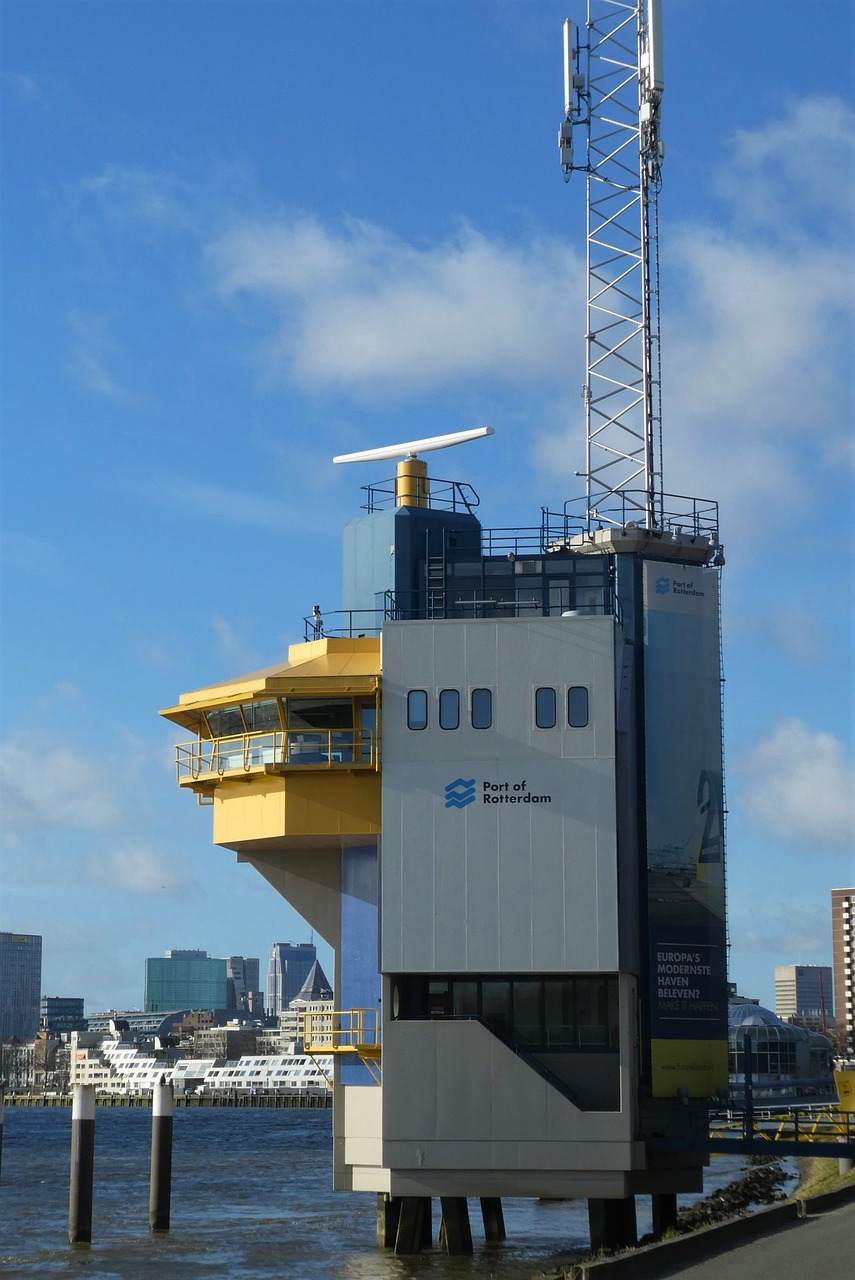There is yet much uncertainty, both of future-proof techniques as well as on legislation and regulations. However, waiting is not an option. To remain competitive, action is required now. And that is exactly what these three shipping companies are doing.
Rotterdam’s Waal-Eemhaven is home to the City Terminal, Europe’s largest shortsea cluster. Combined with the high concentration of cooperating (shortsea) terminals and shortsea service providers, the cluster guarantees fast and reliable transport and transhipment of goods throughout Europe. In addition to Rotterdam Shortsea Terminals (RST), Matrans Rotterdam Terminal, Rail Service Center (RSC) and Coolport, there is the Kramer container depot and a container repair yard. In the near future, services will be expanded to include crossdock activities by Neele-Vat. Rotterdam also offers the largest network of feeder services connecting to international liner services and a direct connection to deepsea liner connections with more than 140 international ports.
One central location for all services
“The strength of the Waal-Eemhaven area is that all services are brought together in one location,” Caesar Luikenaar states. Until recently, Luikenaar was responsible for all shortsea activities of W.E.C. Lines. As of July 1, 2023, he is the acting CEO of this shipping company.
“Precisely”, Koert Luitwieler, CEO of BG Freight Line adds, “because of the combination with deepsea, you must make a round of Rotterdam. In this branch, there is a lot of transhipment cargo as well. If you can load and unload cargo in one central location, transit times and costs are kept to a minimum.”
Maciek Chelmowski, Regional Director West Europe at Samskip, nods and continues: “The trimodal nature of the Rotterdam shortsea terminal is essential. But everything should function properly. Otherwise, it turns into a bottleneck.” Shipping companies want to offer reliability, and according to these three gentlemen, this was not always possible in the past. Since the shortsea terminal, the rail terminal and the shipping lines joined forces, the processing times of containers have improved substantially, allowing more containers to be taken off the road and for shipping companies to provide a more sustainable alternative. Chelmowski: “For all containers, we can guarantee that they will be processed between rail and sea terminal within 24 hours. In practice, containers are processed even faster; within 12 hours. There is also more transparency.” Luitwieler: “In the past where miscommunication caused parties to point at each other, now there is clear communication. Focus is no longer about passing responsibility to another, but rather sharing it with each other.”
Hinterland nearby and unmatched flexibility
Many of the shipping companies’ customers are in close proximity to the shortsea cluster. The short distances to and from terminals along with the high degree of flexibility make it possible for cargo to be accepted until just before shipping. This also allows for strong competition with other modalities.
“If you first had to drive to the Maasvlakte with all the containers for example, it would cost both time and money. Extra investments are now avoided because the Waal-Eemhaven area is located more inland. This offers advantages in terms of efficiency and deployability,” Chelmowski adds. “In theory, cargo can be delivered just up to an hour before shipping. That degree of flexibility is really unparalleled.”
The direct connection to RSC – and thus to the Hinterland – also plays an important role. “Many customers choose a shipping company from this point. It is a kind of travel agency for shortsea,” Luikenaar explains. The cluster therefore remains a clean and cost-efficient alternative to road transport in particular.
Of course, the shipping lines continue to look critically at shipping schedules and port calls. “Certainly if there is less cargo in the market and in view of the overall sustainability discussion, you look carefully at whether you can perhaps reduce port calls and operate an even better in schedule,” Luikenaar states. “The same is true if you look at what a port call costs; not only in terms of time, but also in terms of money. These are serious amounts,” Luitwieler adds. “It is then definitely an advantage if a port offers scale and shortsea services are concentrated, such as in the Waal-Eemhaven area.”
Sustainability, undisputed key trend
Sustainability is indisputably the key challenge facing the industry more than ever. On this the shipping companies unanimously agree. “2023 Is the year in which we are all measuring what we are emitting. Based on this, more actions will be taken. All of us are fully committed to more sustainable shortsea operations. If you don’t take further action now, it will cost you big money,” Luikenaar says. He is referring to the European Trading System, which applies from January 1, 2024. “From then on, 40 percent of emissions will be taxed. The following year it will be 70 percent and eventually it will go to 100 percent. Then we are talking serious amounts of money,” Luitwieler explains. “It is absolutely no option to simply sit back and wait. Especially since every year there are fewer opportunities to buy off pollution.”
Many initiatives
Each of the shipping companies is therefore developing various initiatives to make their operations more sustainable. W.E.C. Lines and BG Freight Line have opted for new shipbuilding. Until then, the shipping companies are focusing on biofuels. “Low-hanging fruit,” Luitwieler calls it. “An ideal start on the way to the final goal for a future-proof fleet in 2030.” They are also looking at techniques for capturing CO2, reducing particulate matter and reducing noise. Currently, 30 percent of CO2 emissions are already captured. Technically it is feasible to capture up to 90 percent, but in order to make that financially realistic at the moment, scale is needed.
Samskip has been using biofuels for years and is investing heavily in sustainability. We recently invested in a fleet expansion with two hydrogen ships. For Rhine shipping from Rotterdam to Duisburg, a hybrid, electrically powered, barge project is starting. “That business case is even more realistic now than we initially thought,” Chelmowski says. Furthermore, Samskip is deploying hydrotreated vegetable oil (HVO) for trucks in Scandinavia and exploring different options in the Netherlands to do the same.”
Lack of clarity
To make sustainability initiatives profitable, these three gentlemen say market acceptance plays an important role. “In Scandinavia we have good experiences and see that customers are willing to pay 3 to 4 percent extra for cleaner transport. That by no means covers the higher costs incurred, but it is a start,” Chelmowski continues. According to him, it would be much more effective if other modalities were subject to the same CO2 tax.
Luitwieler couldn’t agree more: “Equal treatment for all,” he says. According to the CEO, there is a lack of clarity on the matter; “Not only in terms of sanctions, or for how long biofuels will be incentivized. Especially when looking at standards and forward-looking technologies, clarity is lacking as well. After all, the investments involved in making the shortsea sector more sustainable are substantial; investments that are made for 20 to 25 years. Then it is, to put it mildly, useful to know where we stand and which direction we are heading.”
National governments have limited influence on this, according to the shipping companies, but can certainly contribute by means such as road tax for more polluting road transport. But the ball is mainly with Brussels. Luitwieler: “There they can address geographical inequality in terms of regulations at the same time.”
Indirect consequences
As an indirect effect of making the shortsea supply chain more sustainable, there is increased pressure on organizations. “You need in-house knowledge,” Luikenaar points out. “Smart, talented people, who see and understand the social benefit and also want to contribute.” For this reason, W.E.C. Lines is trying more than ever to be an attractive employer and to give employees insight into the impact of various sustainability initiatives. “Still, it is quite difficult to find and retain the right people in today’s tight labor market,” Luikenaar notes.
“Although you can find good people in other countries and we are getting more and more used to the possibilities of remote working, it remains a challenge,” Chelmowski responds. Samskip meanwhile has a separate sustainability department where employees
are engaged only with sustainability. “Samskip’s sky-high sustainability ambitions also attract young talent,” according to Chelmowski: “It is great to be dealing with future-proof projects on a daily basis. Certainly young people see it as a challenge to participate in a low-emission or emission-free supply chain. But because our ambitions are that high, it is crucial that those employees understand the operation from A to Z.”
Bottom line
Clearly, shipping companies cannot afford to sit back and wait. They are forced to be creative right now and that generates a lot of great initiatives. Very few parties are betting on just one horse. There is no need for that either, as there are countless options. “Partly for that reason, it is wise to keep your eyes and ears open and be well informed,” Luikenaar concludes. “When making ships and operations more sustainable, it is more important than ever to share information and knowledge.” The Port of Rotterdam Authority also has a role to play here, for example by organizing knowledge sessions and sharing knowledge with parties in the market.

